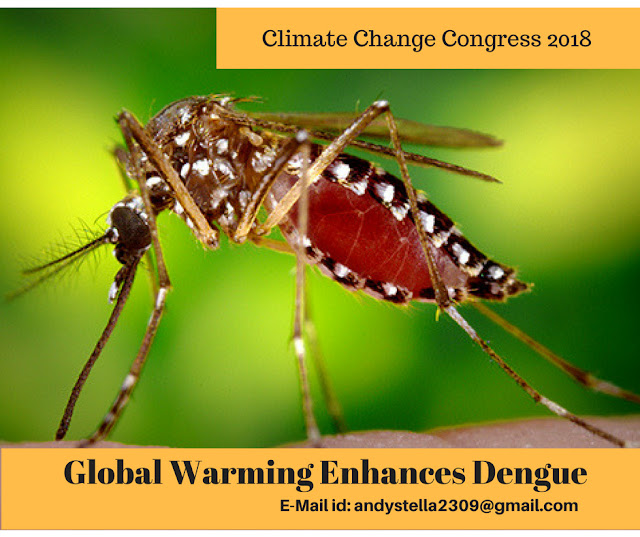Mosquito-borne Diseases on the Uptick—Thanks to Global Warming
Since the year 2000, Climate Change is affecting our environment in various ways. The warming conditions of the Climate Change are not only responsible for rising ocean but also to increase the infectious diseases like Malaria, Dengue fever and West Nile Viruses which creates mosquito-friendly habitats.
Dengue is known as “break-bone fever” which infects around 390 million people each year throughout the world. About 54 million cases in Latin America and the Caribbean has been reported. It is a fatal disease, causes flu-like symptoms and there is no cure for this disease, only an early detection, and expert care is known to be a most effective way to overcome this infection. According to the World Health Organization, in the last 50 years, the number of cases has increased 30-fold.
Dengue is a vector-borne disease that spreads best in warm Climates. Only two species of mosquitoes are suitable for spreading the disease,i.e.
# the primary one is Aedes Aegypti which is also known as yellow-fever mosquito which can be recognized by white stripes on its legs. It is active during the day and is an urban-lover where it also breeds in any container holding water, like planters or waste tires.
#the secondary vector is Ae. albopictus, which is a recent invader to the U.S.
Half a Degree Can Make a Big Difference
Upto now, there is about 54 million case has been reported, but by around 2050, with a warming scenario of 3.7 0celcius, this number could increase by 7.5 million additional cases a year. It is also recognized that limiting warming to 1.5 0celcius would have benefits for human health; the magnitude of this benefits remains unquantified.
Which Countries in the Region are Most at Risk?
The areas most affected by the increase in dengue would be southern Mexico, the Caribbean, Ecuador, Colombia, Venezuela and the coastal regions of Brazil. In Brazil alone, global warming of no more than 1.5 degrees might prevent 1.4 million dengue cases a year.
People living in previously untouched would have less built-up immunity and can easily get sick and it could spread to regions that have historically seen few cases earlier. Keeping to 1.5 0celcius could limit such a geographical expansion.



Comments
Post a Comment